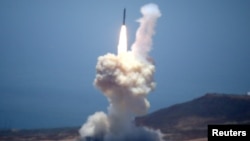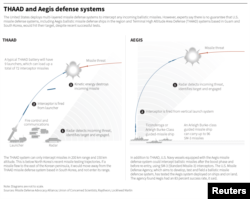The Pentagon is injecting $440 million more into missile defense, including yet another expansion of its fleet of missile interceptors, to counter North Korea’s accelerating push for a nuclear-armed missile capable of hitting the United States.
As a reflection of its urgency, the Pentagon asked Congress to let it shift funds from the current budget rather than wait for the next defense budget. The Pentagon had $8.2 billion in its missile defense budget before the add-ons.
Where is money from?
The Pentagon Wednesday spelled out $367 million of the shifted money, with the rest expected to be announced later. The spending has come under increased scrutiny as North Korea’s nuclear and missile programs have progressed and critics have questioned whether the Pentagon has developed missile defenses that would work in combat.
Some of the additional $440 million is for projects that are classified secret, including $48 million more for development of technology for cyber operations, according to a breakdown of the spending by the Pentagon’s budget office.
The Pentagon has never acknowledged that it has engaged in cyber operations against North Korea’s nuclear or missile programs. The New York Times earlier this year reported that in 2014, then-President Barack Obama ordered Pentagon officials to step up their cyber and electronic strikes against North Korea’s missile program in hopes of sabotaging test launches.
Alaska arsenal
The more conventional approach to countering North Korea’s missiles is what the Pentagon calls ground-based interceptors, which are anti-missile missiles that would be launched from underground silos at Fort Greely in Alaska in the event the U.S. decided to try to shoot down a North Korean missile aimed at the United States. The interceptors are designed to slam into an incoming enemy missile outside the Earth’s atmosphere, obliterating it by the force of impact.
The $440 million in extra funds for missile defense include $128 million to begin a new expansion of the missile interceptor force in Alaska. That includes $81 million to begin increasing the number of interceptors from 44 to 64, and $47 million to begin buying parts for 10 of the additional 20 underground silos in which the interceptors are installed.
The Pentagon had not publicly announced that it plans to increase the interceptor force by 20. The decision reflects concern that the current force is inadequate to face a North Korean nuclear and missile threat that is growing faster than anticipated.










